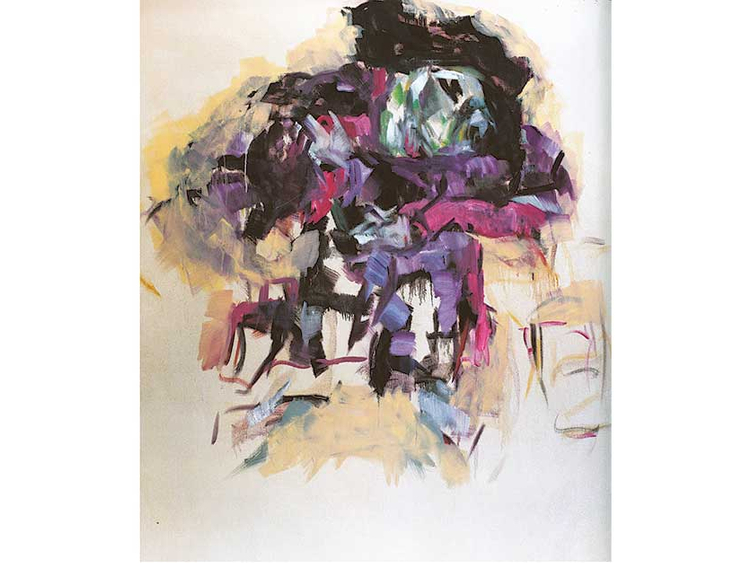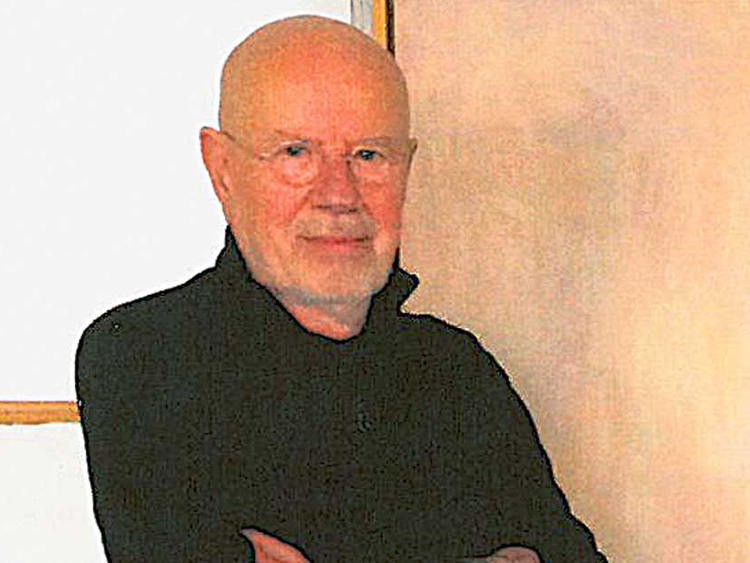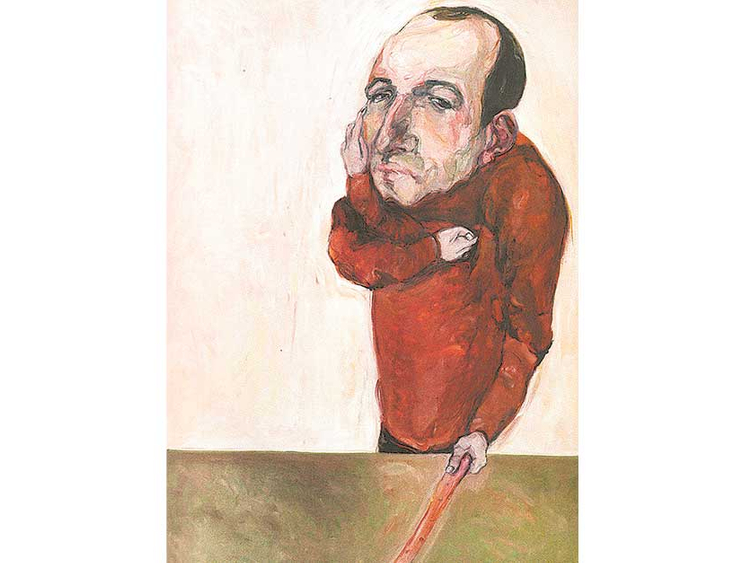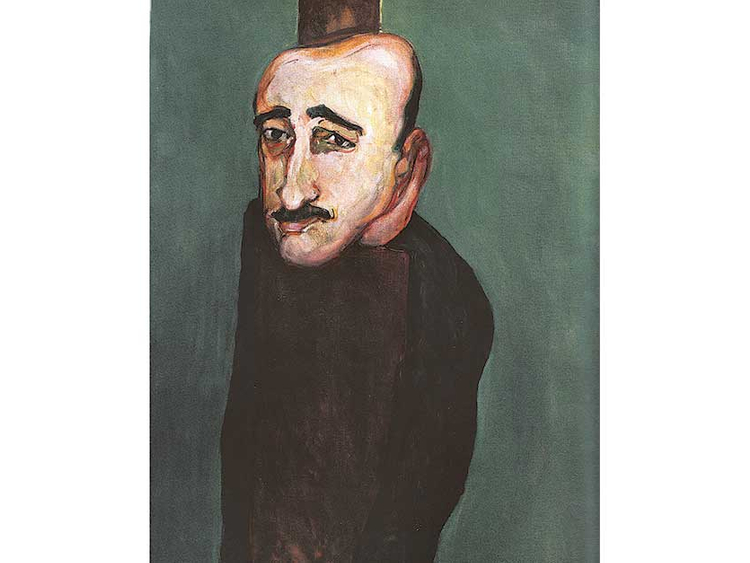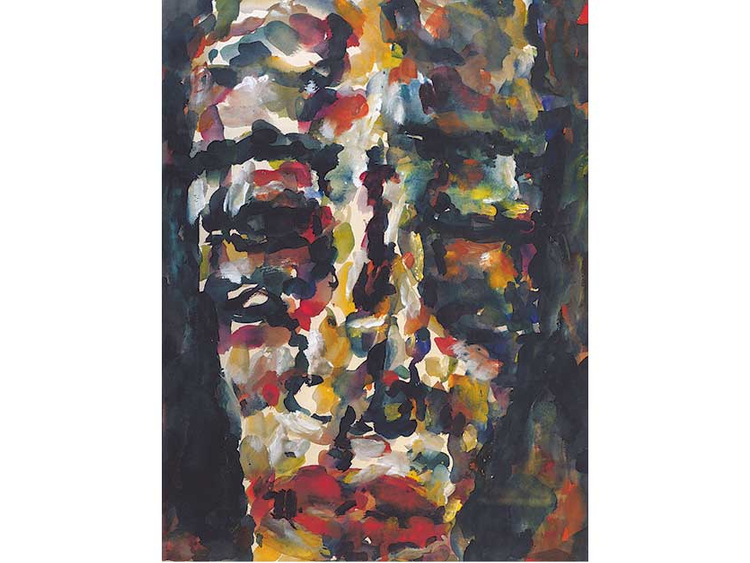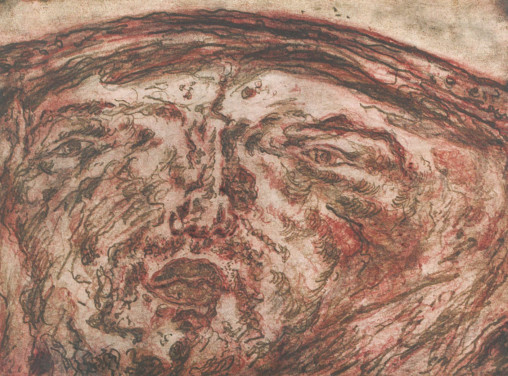
One of the most significant solo art shows to happen this year in this region opened at the Al Maraya Art Centre at Al Qasba in Sharjah on December 6, under the auspices of the Barjeel Art Foundation.
Titled “Marwan: Topographies of the Soul”, the show pays tribute to a towering figure of art, the 80-year-old Syrian-born Marwan Kassab Bachi, who has spent all his working life from 1957 in Berlin.
The exhibition also serves as a happy and successful culmination of Sultan Sooud Al Qassemi’s personal quest to understand Marwan’s artistic journey that took the artist from his homeland in Syria to Berlin.
Marwan is well known for his unique depictions of human faces. In some instances they are well-articulated representations of individuals with distinct features, while at other times, individual traits are abstracted, turning faces into anonymous masks.
In his foreword in the exhibition catalogue, Al Qassemi mentions coming face to face with Marwan’s abstract “face” work at Frieze London in 2009, an oil-on-canvas painting measuring 195cm by 130cm produced in 2006. Al Qassemi was to later acquire the large abstract face painting, which is now in the Barjeel Art Foundation’s collection, and is currently on show at the “Topographies of the Soul” exhibition. Fascination to delve deeper prompted Al Qassemi to travel to Amman and Berlin to see Marwan’s new works.
“The artist Marwan has never had a solo show in the Gulf region before. It was an honour for Barjeel Art Foundation to organise an exhibition of his work and introduce regional audiences to the varied themes and techniques employed in his practice. Few living artists can lay claim to being amongst the very best of their generation, not just regionally, but internationally. In 1994 he became the first Arab member of the distinguished Akademie der Künste of Germany. We are very pleased with the success of the opening night, and encourage the public to visit the exhibition before February 6, 2015,” Al Qassemi told Weekend Review.
Varied collection
“Topographies of the Soul”, is the first exhibition in the GCC to showcase a range of Marwan’s work within a single venue. Here, visitors will be able to see the artist’s large-scale oil-on-canvas paintings, aquarelle works on paper, as well as etchings and quick sketches executed in pencil. The show will present portraits derived from life, stylised representations of faces, and will include several depictions of marionettes.
As Al Qassemi points out, Marwan’s work has been shown extensively in the Levant, with a major show held in Beirut in 2013. “While Marwan has never before exhibited his work in a solo capacity in the GCC, his work is not entirely disassociated from the Gulf region. Although Marwan spent most of his life in Europe, his relationship with the Arab world endures through his paintings and the friendships he has developed with other intellectuals from the region.”
Last year, Marwan took part in the “Talking Art” series at Guggenheim Abu Dhabi, presented as part of Abu Dhabi Art 2013.
The late Saudi writer Abdul Rahman Munif, a great friend of the artist, has been quoted saying: “ Marwan belongs to a rare breed of artists who firmly believe that art is a moral act which links entertainment and joy with a search for truth.”
Marwan’s art encompasses myriad viewpoints. Take the etchings from 1969, for example. In the figures, there is an element of posing, defiance or shying from an alien gaze and all of them seem valid to viewers. Or is the couple, hiding behind one another in an act of effacement, or clinging on to the other in a gesture of longing? Even in bed, the faraway look is maintained, as in the portrait or close up.
“Munif Al Razzaz” (1965, oil on canvas), the portrait of the Secretary General of the Syrian Ba’ath Party, covering his right ear with his hand, is a superb example of spatial organisation, without losing anything from the subject, meeting the gaze of the viewer head on.
In the etching, “Khaddouj” (1971), the bent pose is not that of surrender — the core of the individual being is still facing up to the outside world as it were. The work which is part of a series carries the memories of Khaddouj, the family’s domestic helper.
The “99 Head” series (1997-1998) provides a fascinating panorama of Marwan’s mastery of his subject and his craft and will be an eye-opener for any art student.
Besides faces and heads, which he has transformed into landscapes or ‘topographies of the soul’, Marwan has embarked on still life and a series on marionettes.
The marionette series is a repeated theme which appears across various periods of his artistic life and reveals yet again his mastery. Even in the abstract versions, the work retains all the vigours of his figurative work.
Marionettes or puppetry is an ancient form of performance that predates actors in theatre. Gretl Aicher, the former artistic director of Salzburg Marionette Theatre, has commented, “What then is the fascination of a life with marionettes? Is it the pleasure of performing? The appeal of mastering an ‘instrument’ to the point of virtuosity? The transformation of one’s own self? For me, it is the process of empathising with mind and soul, of feeling at one with music and movement that bring these much loved creatures to life.”
It may have been the same sentiment that moved Marwan to seek to portray these marionettes in various moods and poses.
Charlotte Bank, art historian and independent curator, maintains that even after 57 years of leading a successful artistic life in Berlin, Marwan “remains a Damasene at heart”. But he also remains an active member of the art scene in his chosen city, Berlin.
When Marwan began his artistic life in Berlin, there must have been many influences — French, German and American. But abstraction was not for Marwan who moved towards figuration in “a particular poetic mode, an almost lyrical quality that is very characteristic for his work.”
“This centrality of human existence with its joys and sorrows appears in perhaps the most innocent way in the portraits of the Palestinian youngsters, such as ‘Three Palestinian Boys (1970)’.”
The middle figure dominates, while one is almost out of the frame. The bleak background brings to the fore a youthful innocence and an essential unity of purpose, a bond forged from an ordeal of fire.
Critics have also noted the breakthrough in colour, theme, technique and approach in Marwan’s work during 1973, when he spent a year on a scholarship in Paris, a dream destination for him as a painter. Colour and bold experimentation took form in his work in almost a surrealistic manner.
As Bank notes, “Marwan’s faces started to change, to gain a new depth, their surface becoming more and more fragmented, with patches of colour accentuating furrows and lines. Viewers can immerse themselves in the image; wander among its depths and heights and contemplate the marvels of existence. We are faced with a vast landscape, a topography of the soul,”
Ismail Al Rifa’i, Syrian artist, poet and novelist says, “Throughout an increasing journey of discovery, Marwan was able to create a spiritual world parallel to the material world in which he lived.”
German art historian and friend of the painter, Jorn Merkert , who has written at length on Marwan’s art, comments: “Marwan is obsessed by faces because for him they are a means of expressing the dramatic depth of life. I do not know any artist anywhere who to such an extent has adopted the head, the monumentalised head, as practically his only theme, in which the world can be laid bare and last question put into painting. It is understandable, given our age, that Marwan does not indicate any ideals. He reveals conditions and experiences.
“The fact that last questions are posed last answers are not attempted, confirms the honesty of Marwan’s art.”
Fitting musical tribute
An exclusive musical performance by the Khoury project at the opening reception of “Marwan: Topographies of the Soul” was a fitting tribute. The Khoury Project is a group of three brothers who live and breathe music: Elia Khoury (oud), Basil Khoury (violin), and Osama Khoury (qanun) — were joined by bassist Guillaume Robert and percussionist Inor Sotolongo. The Khoury members are all classically trained and have studied with masters, blending musical traditions from the Middle East and the Mediterranean to form a bridge to jazz — its blue notes and flights of improvisational fancy — not to mention Flamenco, gypsy, Celtic, and Indian music.
N.P. Krishna Kumar is a freelance writer based in Dubai.
“Topographies of the Soul” will run at the Al Maraya Centre, Al Qasba, Sharjah until February 6, 2015.



